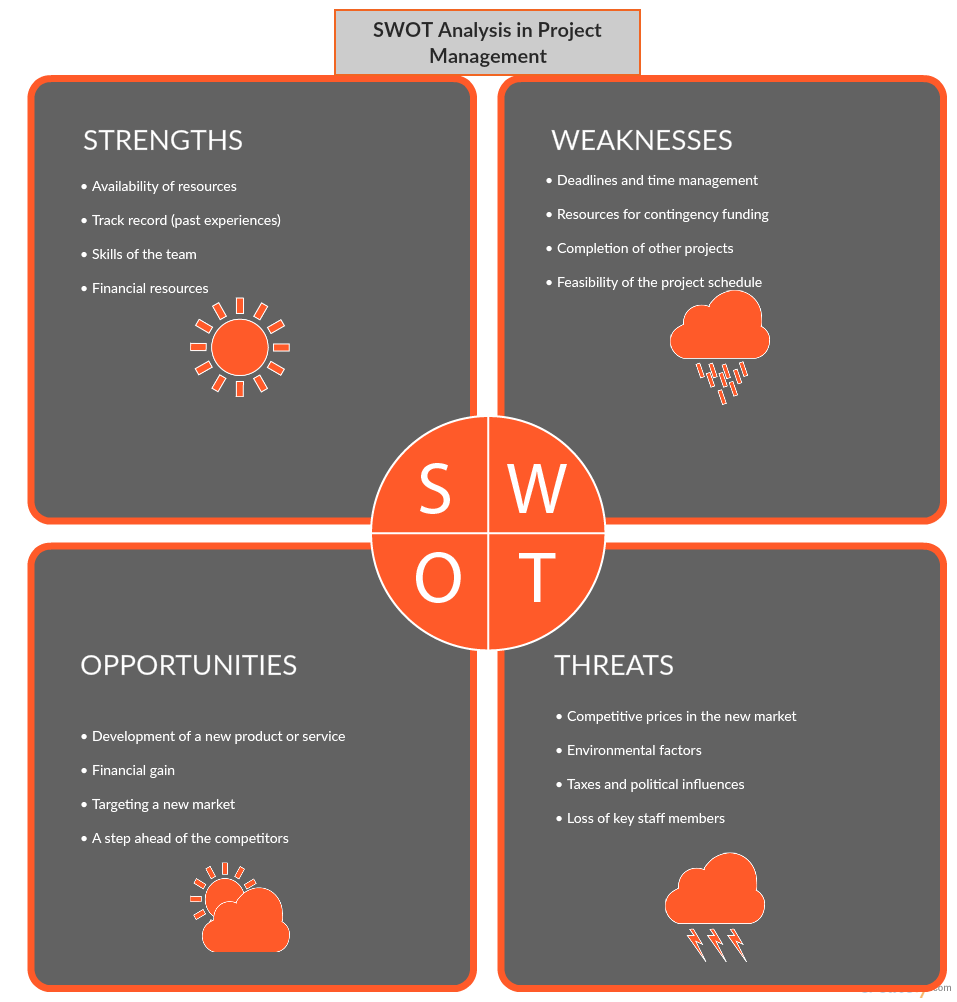The SWOT: Definition, Method And Example
If you have ever worked on a company’s strategic positioning, you may have referred to “the SWOT matrix.”
This has nothing to do with US Militarized Law Enforcement Intervention Units (SWATs) assessment but relates to a widely used corporate strategic review tool for developing business strategies.
Summary:
SWOT: definition
Break down the process of SWOT or SWOT analysis
Internal and external factors
Can you do a SWOT analysis yourself?
How to do a SWOT analysis?
SWOT analysis and PESTEL analysis, two complementary tools
Why should every VSE and SME creator or manager carry out a SWOT analysis?
How to do your own SWOT study (our example)

Carrying out a SWOT is a powerful way for entrepreneurs or managers of VSEs and SMEs to prepare their project or company’s marketing and commercial strategy.
In this article, you will learn about SWOT, look at some examples of SWOT matrix, and get tips and strategies for conducting a comprehensive and quality SWOT analysis on your own.
You will also grasp how it is possible to use the data produced by a SWOT exercise to improve your business creation project, internal processes and production flows.
Before we move on to the tips, techniques, and cases to know, let’s start with the basics:
What is a SWOT?
THE SWOT: Definition
The SWOT is a business strategy tool invented by a group of Harvard professors: Learned, Christensen, Andrews, and Guth intended to identify strategic choices for a business project. It allows you to define goals based on internal and external factors to achieve them.
Carrying out a SWOT is an approach that relies on identifying your Strengths, Weaknesses, and Market Opportunities and Threats (SWOT Strengths, Weaknesses, Opportunities, and Threats).
Beyond its ease of implementation, one of the major interests of SWOT is that it is applicable to all types of strategic approaches. It can apply:
To an entire business or organization;
For a business creation project;
To individual projects within a single department;
A specific approach (online advertising campaign for example);
For a personal approach,
Or any other project that requires strategic thinking.
Most often, SWOTs are used at the organizational level to assess how well a business or start-up project is aligned with its growth objectives and key success factors.
BREAKDOWN OF THE SWOT OR SWOT ANALYSIS PROCESS
We know that the SWOT represents the strengths, weaknesses, opportunities and threats facing a project, business or organization. But how we can interpret and define each of these elements? Let’s take a look at all of them in detail so that we can understand them in a better way and know how to work with them individually.
Strengths
The first element of the SWOT matrix to study is S or the forces. The process consists of identifying and then evaluating the strengths available to your project or your company to develop its activity. This requires looking at all aspects of the activity: trade, management, administration, …
Strengths identify and synthesize what your business or project does particularly well. We are talking about characteristics and functionalities that represent added value for your customer offer.
It could be something tangible, like a specific location, product or know-how, or something intangible, like the reputation of a particular company brand, network, or service offering. It could also be your staff, your human resources or your managerial capacity: strong leadership or a great team of engineers.
Weaknesses
After you’ve worked on your strengths, it’s time to take a step back and use your critical thinking skills to identify where the weaknesses are in your project or business. Your trusted entourage, whether personal or professional, can help you identify them.
What is holding back or limiting your business or project? This can be constraints (financial, technical, geographic, regulatory, etc.) or organizational difficulties (logistical problems, training, recruitment of qualified personnel, etc.).
This second element of the SWOT study should also take into consideration any weaknesses compared to competitors or innovations in your industry. We can imagine this by evoking the case of strong competition that would prevent the possibility of developing a clearly defined Single Selling Proposition (USP). The presence of too many players complicates business differentiation.
USP – Unique Selling Proposition
The Unique Selling Proposition (USP) is a marketing principle developed by Rosser Reeves, according to which a USP offers an advantage, added value, or a singular functionality allowing the product to stand out and differentiate it from the competition.
Opportunities
A strategy is based on our strengths and weaknesses, the opportunities available to us, and the risks involved. Opportunities and threats are external to the company, elements and/or events over which the company has little or no influence but must take into account to ensure its economic development.
Opportunities, also called Possibilities, represent the external elements that contribute to the development of the activity. An opportunity represents a business development opportunity that has been identified but has not been implemented. A business that fails to process all contacts properly or leads generated by its marketing team has an identified business development opportunity. Another opportunity is the business or startup that develops an innovation to conquer new markets.
In summary, in a SWOT, opportunities cover everything possible to develop a project, boost business activity, and improve sales. This includes all the steps to develop your business, grow, or achieve your business goals.
Threats
The last element to identify to achieve your SWOT is the Threats to your business. Anything that poses a risk for the development of your business, its possibilities for success or commercial growth.
This represents a relatively broad field of investigation, which can include quite diverse factors such as the emergence of new competitors, changes in regulations, external financial risks (financial or real estate bubble), and anything that could compromise the future of your business or your creative project.
INTERNAL AND EXTERNAL FACTORS
The above four elements are common to all SWOTs. They represent the fields of investigation that many companies group into two distinct sub-groups: namely internal and external factors.
This explains why some SWOT metrics are sometimes referred to as internal-external analyzes or IE metrics.
Internal Factors of SWOT
Strengths and weaknesses are considered internal factors because they are the result of strategic, managerial or organizational decisions taken under the control of the manager of the company or his team.
Customer reception, the after-sales service (after-sales service) return rate or the customer renewal rate are (or should be) under the company’s control, making them internal factors.
An unappreciated customer reception, a high after-sales service rate or a high customer renewal rate will therefore be considered as weaknesses, while a quality customer reception, a low after-sales service rate or lasting customer loyalty will be among the factors. Strengths of the company.
External Factors of SWOT
Conversely, some elements cannot be controlled by the company. Weather risks, changing regulations or the arrival of new competitors are a threat in a SWOT analysis. However, little can be done to limit these types of events, making them external factors.
Should the elements of the SWOT analysis be classified into internal or external factors?
Ordering your four main elements into internal and external factors is not necessarily essential to the success of your SWOT analysis. However, this process can help to identify certain concrete actions taken or to be taken or to assess the degree of control that you have over a given issue or occasion.
Now that we have defined each of the elements of the SWOT analysis. You can take a look at how to create and conduct a SWOT analysis in the next post.
Need Help or Advice in Content Management:
Would you like more advice? Do you have good practices to share? Express yourself in the comments.
Also, if you would like any help in writing content to drive more traffic and boost conversions, please get in touch through Contact our team.
Do you want help writing quality content, driving traffic to your website, and boosting conversions? You can contact me through my Freelancer.com profile also. I always prefer to work through Freelancer.com for smooth functioning. Here you pay safely and securely.


